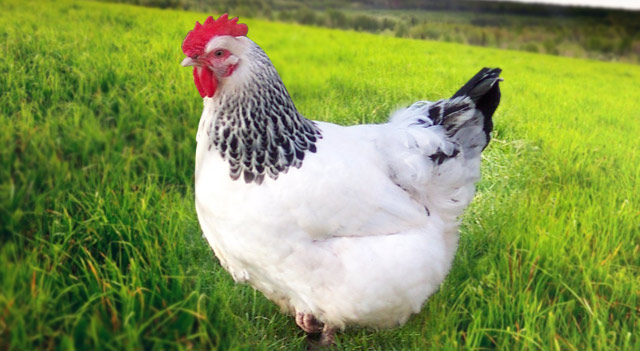Curiosity and Necessity: Reflections on Eating and Chef Ido
by Matthew Yeager
How much consciousness ought to be given to eating? The opening and closing of the mouth, the flexing of the jaw muscles, the smashing, gnashing, and grinding of the teeth (our loveliest bones), the peristaltic contractions of the throat and esophagus, the acidic pit of the stomach, the wound miles of intestines, all the bio-chemical processes by which living tissues are transformed into our hair, our muscle, our fingernails, our bones: taken together, what the act of eating entails is about as appetizing as a documentary on a factory farm. Unlike other biological processes – sex, for instance, which absorbs so much mental energy before it’s ever physically experienced – eating is something that we engage in long before we ever given it a second thought. While the sounds of love-making can be arousing when overheard, no one would say the same about the sounds of chewing and swallowing. And yet eating is more fundamental than sex; it is more fundamental than breathing. No matter your kingdom, your phylum, your class, your order, your family, your genus, or your species, you must eat. We can say with assurance that we gobble shrimp for the same reasons that shrimp gobble flatworms, which is the same reason flatworms gobble amoebae, which is the same reason amoebae gobble protozoans: because we’re hard-wired to take pleasure in it. Though there are few ideas more outdated than “The Great Chain of Being,” what binds Stephen Hawking, Pope Francis, and Yo-Yo Ma to the lowliest bacterium is that they all must engage in this most horrifying and delectable of activities.
Of course, part and parcel with eating comes a knowledge of what to eat. We eat according to the dictates of taste, which is probably the most difficult to express verbally of the five senses. When we say cheddar is sharp, for instance, we’re borrowing an adjective from the realm of the tactile. Often flavor words are reliant on onomatopoeia: tang, for instance, owes much of its meaning to the action of the tongue against the top of the mouth when that elongated n sound is formed, an action similar to that produced when we taste a tangy food. Likewise icky: the exhaled breath scraping against the palate mirrors the act of ridding the mouth of whatever unpleasantness you’ve just put inside it. What’s fascinating about all those words associated with the sense of taste is how readily they swim outside the context of that sense. If I tell you that Person A is sweet and Person B is salty, you won’t assume that I’ve taken a bite out of them; instead, you’ll take it that Person A is kind, quick to smile, and dispense affection; you’ll take it that Person B is curmudgeonly. But of all the words associated with the sense of taste, the word taste itself provides probably the most interesting case. According to Fr. Walter Ong, S.J., one of the pioneers of media studies, taste begins appearing in the language as a metaphor for general choosiness in the 17th century. The application makes sense; taste is immediate; taste says yes or no, and it says what it says emphatically. Evolutionarily, there are good reasons for the tongue’s strong and sudden verdicts. But if we say that someone has taste in music, for example, the implication is that the complex, the unusual, and the initially off-putting can be consumed with pleasure; it means that that person has curiosity, for how else would taste broaden?
An active consciousness of eating begins for me, embarrassing, as it is to admit, in the year 2005; I use that adjective because by that point I’d been eating for some twenty-five years; I’d also been working in the catering industry for three. This isn’t to say that eating had never crossed my mind; I’d read Joyce’s Ulysses, read how Leopold Bloom ate with relish the inner organs of beasts and fowls, read how mutton kidneys gave to Bloom’s palate a faint tang of urine. I’d seen Leaving Las Vegas and felt sick to my stomach at the slurping and sucking noises Nicholas Cage and Elizabeth Shue made when they ate plates of boom-miced spaghetti. I’d seen the famous Monty Python sketch where the social mores surrounding eating and defecating are reversed; guests sit around a communal table on chamber pots, squinching up their faces, and at the end of the sketch, one character repairs to solitude with a plate of food. Preserved in memory is even my pre-K attitude toward individually wrapped Kraft singles of American cheese; when these slices came out of the packaging with the corners broken off, I judged them inedible. (These broken slices of cheese were handed over to my father, Big Bob, a man so imprisoned by the momentary delights of whatever it is he happens to be eating that he enjoys the greatest meal of his life upwards of three hundred times a year.) I was also conscious of the value of food in the catering context. A single dome of warm parmesan pudding, the size of the tip of a thumb, combined with a roasted slice of grape tomato on a focaccia cracker had the value of $3 / per; when a tray of them had been walked around a NY cocktail party, those that weren’t taken by guests rendered valueless; they were put on a plastic plate, and given to staff. I used to keep a running ticker in my mind of the value of what I managed to get into my mouth at an event, and as the number grew, so did my satisfaction. As a caterer, you relate to “guest food” roughly the way that dogs relate to “people food.”
According Ido Ben-Smuel, the most gifted chef I’ve ever met (and after a decade working in the industry I’ve known many damned good ones and a few great ones), food is not art. Ido loved nothing more than claiming a lack of knowledge in areas where he actually was an authority (his favorite physical gesture was a kind of Socratic shrug), but on the question of food as art, he was emphatic: fud eez not art. An Israeli immigrant, Ido and I struck up a friendship in early 2005; after a decade cooking at some of the best restaurants in Paris, after stints in NY at Daniel and Aquavit, his complex relationship to cuisine had brought on a spiritual crisis. He didn’t know if he wanted to be a chef anymore. He brought me to a party at a loft in Tribeca at which the sous chef at Daniel and he were cooking. I forget that sous chef’s name, but I was amazed at the deference he showed to Ido; he said something to the effect of, “Nobody can put flavors and proportions together in his head quite so accurately as Ido.” The tongue in his brain was as sensitive as his tongue. Ido was very taken with Bob Spiegel, formerly the executive chef at Creative Edge Parties, now the executive chef and owner of Pinch Food Design. “Dees hors d’oeuvre makes great sense to me,” he’d say, holding one aloft. “Such a nice personality; knows just what it is.” He’d take up another: “Dees one, though, dees one is a classic, but it will never make sense to me.” Ido liked catering; he liked the challenge of getting out 400 entrees in the industry standard of ten minutes, and he loved Bob’s playfulness.
We got to know one another through a series of conversations had in the cab of a box-truck. The truck was embossed with a gigantic exotic hen of some sort, which regularly caused drunks to hook their their thumbs into their armpits, flap their elbows, and squawk at the tops of their lungs. At the time, my job was to drive this thing like a madman through the streets of Manhattan, my confidence buoyed, admittedly, by the stereotypes New Yorkers have of Midwesterners’ abilities behind the wheel. Ido was an excellent chess player, and in some ways, had too restless an intelligence to give his life completely to food. His belief that food wasn’t art hinged on the fact that art can negate itself and yet remain art; art could undermine art; cuisine, however, cannot be anti-cuisine and yet be cuisine. It could be “deconstructed,” but it had always to remain edible. Em, let me ask you sometink; you know dees piece of music 4:33 by John Cage, all made of rests? Em, suppose I put a blank plate in front of someone at a restaurant and charge him thirty dollars? Do you think he comes to the kitchen and says, “Hey Ido, you’re a genius. Thank you.” No, he’d say Ido, go serve this to your Polish mother and ask her what she says, ok?”
In early 2006, Ido helped open and design the menu for Miriam, the acclaimed Israeli restaurant in Park Slope. He convinced the owners to hire his friend Matt the Poet to write copy. “Tell me about Israeli cuisine,” I said. He assumed a position like someone about to be psychoanalyzed, stared up at the ceiling, and told me that the first and most important thing I ought to know about Israeli cuisine was that it didn’t exist. Didn’t exist? “Right,” he said, “It doesn’t exist. There is no such thing as Israeli cuisine.” If you go to the website for Miriam Restaurant and click on the subheading “Israeli Cuisine,” you can still find the product of the education Ido gave me in this cuisine that didn’t exist. It was from Ido that I began to see just what an act of fusion most plates of food truly are – how many places and cultures they bring together, how much can unfold in the mind if the cultures and the climates are mentally engaged. It is possible to put the globe on a plate. In the poem “Chef Ido Eats an Orange,” which Laura Cronk was kind enough to publish, I tried to capture and convey the inquisitive spirit of Ido – truly one of the brilliant and unique people I’ve ever been lucky enough to call a friend.

Matthew Yeager’s poems have appeared in Sixthfinch, Gulf Coast, NY Quarterly, Minnesota Review, and elsewhere, as well as Best American Poetry 2005 and Best American Poetry 2010. His short film “A Big Ball of Foil in a Small NY Apartment”was an official selection at thirteen film festivals in 2009-2010, picking up three awards. Other distinctions include the Barthelme Prize in Short Prose and two MacDowell fellowships. He is the co-curator of the long running KGB Monday Night Poetry Series, and lives in Ridgewood, Queens, NY.


Comments are closed.